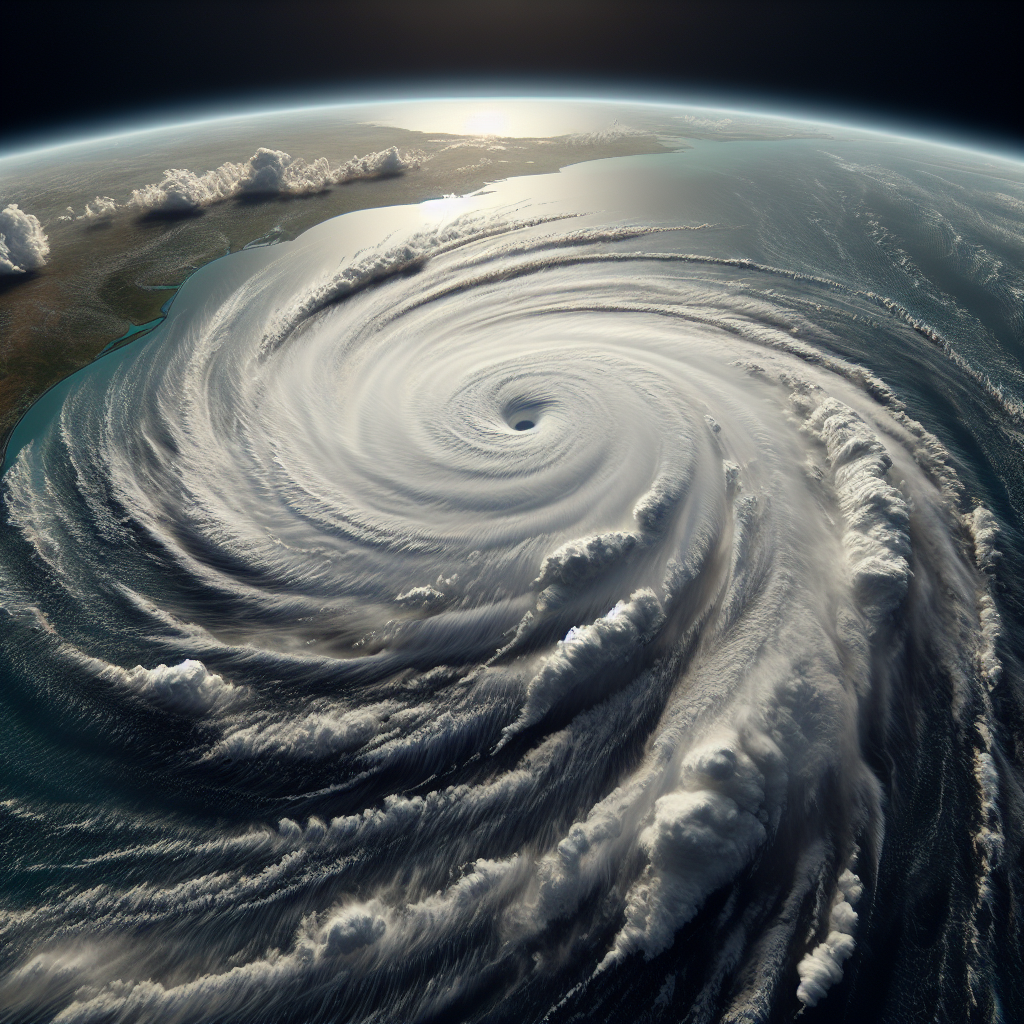Hurricane Beryl Devastates Caribbean: Climate Change Fuels Catastrophic Storm
Hurricane Beryl, a powerful Category 4 storm, neared Jamaica after flattening homes and devastating agriculture on smaller Caribbean islands, killing at least seven. Scientists say climate change likely fueled the storm's rapid intensification. Beryl's early formation and intensity hint at potential future climate-driven storms.

Hurricane Beryl neared Jamaica as a powerful Category 4 storm on Wednesday, after flattening homes and devastating agriculture on smaller islands in the eastern Caribbean, killing at least seven people and creating "Armageddon-like" conditions on Grenada. At around 5 a.m. EDT (0900 GMT), the hurricane was about 185 miles (300 km) east-southeast of the Jamaican capital of Kingston, according to the U.S. National Hurricane Center, packing maximum sustained winds of 145 miles (230 km) per hour.
"Beryl is expected to bring life-threatening winds and storm surge to Jamaica on Wednesday and the Cayman Islands Wednesday night and Thursday," the hurricane center said in an advisory. A hurricane warning is in effect for both places. Hurricane conditions are expected to reach the coast of Jamaica about midday local time, with tropical storm-strength winds beginning in the late morning, making outside preparations difficult or dangerous, it said.
In the capital, Kingston, cars lined up at gas stations as people filled additional containers with fuel. Residents stocked up on water and other essential supplies and boarded up shops and houses. "Yeah, right now (we're) worrying about the storm. You know it's Category 5, and in Jamaica people are worried and always shopping and buying things as in this store," said Andre, a salesperson in a local store, without giving his full name.
The unusually early hurricane, whose rapid strengthening scientists said was likely fueled by human-caused climate change, is expected to still be a hurricane when it passes near Jamaica and the Cayman Islands later this week. Beryl, the 2024 Atlantic season's first hurricane and the earliest storm on record to reach the highest category on the Saffir-Simpson Scale, felled power lines and unleashed flash floods across smaller islands.
IMMENSE DESTRUCTION Venezuelan President Nicolas Maduro said on state television on Tuesday night that three people had died and four were missing in Sucre state in the extreme east of the country, with more than 8,000 homes affected by torrential rains. At least 400 were destroyed.
The storm hit St. Vincent and the Grenadines especially hard, according to Prime Minister Ralph Gonsalves. "The hurricane has come and gone, and it has left in its wake immense destruction," he said. On one island in the Grenadines archipelago, Union Island, 90% of homes had been "severely damaged or destroyed," he said.
The prime minister confirmed one death, and said more fatalities could be confirmed in the coming days. In a video briefing on Tuesday, Grenada's prime minister, Dickon Mitchell, stressed that Carriacou and Petite Martinique, two of the three islands that make up the country, bore the brunt of the natural disaster, calling the situation "Armageddon-like".
"There is no power. There is almost complete destruction of homes and buildings," he said, citing impassable roads due to downed power lines and destroyed fuel stations crimping supplies. Mitchell confirmed three fatalities had been reported.
The Miami-based U.S. hurricane center estimates the massive weather system is moving toward the west-northwest at a speed of 22 mph (35 kph). In Fort-de-France on the French Caribbean island of Martinique, north of St. Vincent, video shared on social media showed flooded streets and locals attempting to clear away debris.
In addition to Haiti's southern coast, the hurricane center also declared a hurricane watch for Mexico's Yucatan peninsula, dotted with beach resorts popular with tourists. Ahead of the storm's approach expected on Thursday night, Mexico's defense ministry said the army, air force, and national guard had activated emergency response protocols in the three Yucatan states, with 120 shelters opened and nearly 4,900 troops on guard on the peninsula. In resort town of Cancun, supplies of the wooden boards used to protect shop fronts were dwindling as residents prepared for Beryl's arrival.
The unusually early timing and rapid intensification of the storm is partly due to warmer ocean temperatures, scientists say. Climate change probably contributed to Beryl's early formation and the speed with which it intensified, according to scientists surveyed by Reuters, which could provide an unsettling preview of future storms.
Global warming has helped push temperatures in the North Atlantic to record highs, said Christopher Rozoff, an atmospheric scientist at the U.S.-based National Center for Atmospheric Research. The warmer waters cause more evaporation, which fuels more intense hurricanes featuring higher wind speeds, he said. Beryl jumped from a Category 1 to a Category 4 storm in under 10 hours, according to Andra Garner, a Rowan University meteorologist. That marked the fastest intensification ever recorded before September, the peak of the Atlantic hurricane season, she said.
(This story has not been edited by Devdiscourse staff and is auto-generated from a syndicated feed.)
ALSO READ
Mexico's Narrow Win Over Jamaica Marred by Captain's Injury
Mexico Edges Out Jamaica in Copa America Opener Despite Alvarez's Heartbreaking Injury
Teen Phenom Kendry Páez Leads Ecuador to Victory Over Jamaica
Athletics-McLeod secures spot at Paris Olympics with Jamaica long jump title
Kishane Thompson's Blazing 9.77: A New Star in Jamaican Sprinting










